Domande sul vivente

Tiziana Pers, Elephant Song - Shark, 2016. Olio su tela, 100x120cm.
Dal 30 May 2018 al 27 July 2018
Milano
Luogo: aA29 Project Room Milano
Indirizzo: piazza Caiazzo 3
Orari: mer-ven 14.00-19.30 o su appuntamento
Curatori: Gabriela Galati
Telefono per informazioni: +39.340.9691313
E-Mail info: info@aa29.it
Sito ufficiale: http://www.aa29.it
aA29 Project Room Milano è lieta di presentare Domande sul vivente, una mostra collettiva a cura di Gabriela Galati che presenta opere di sei artisti e un collettivo creativo che pongono domande sul vivente con punti di vista e approcci molto diversi, e a volte anche in contesti contraddittori. L’accelerazione esponenziale nello sviluppo tecnologico durante l’ultimo secolo ha inevitabilmente portato a porsi delle domande sui cambiamenti nei rapporti tra uomo e tecnologia, e, quasi allo stesso tempo, sul vivente nel suo complesso. Molte delle ricerche al riguardo sono state proposte sotto il nome di postumano: una “condizione” che implica un avanzamento dell’interesse verso una visione della contemporaneità più complessa e complessiva, che mette sullo stesso piano tutte le forme di vita prendendo in considerazione anche i rapporti con l’inorganico. In questo senso, “vivente”, uno degli aspetti più discussi e difficili da definire dalla biologia, include animali umani e non umani, vegetali, e perché no, anche forme considerate semi-viventi, come ad esempio i virus.
La mostra intende esplorare diverse visioni, approcci e metodologie riguardanti il vivente nelle pratiche artistiche presentate. L’intenzione non è utilizzare gli esseri viventi come materiali o creare un'esperienza puramente estetica; al contrario, tutti questi artisti sono interessati al vivente come argomento di riflessione e spesso di azione, qualunque sia il mezzo scelto per esporlo. Alcuni di loro, come Camilla Alberti, Tiziana Pers e Muriel Rodolosse si avvalgono dalla pittura, Ivana Adaime Makac e Brandon Ballengée includono elementi vegetali e animali nelle loro opere, e Matilde Sambo lavora con video e fotografia.
Gran parte della ricerca artistica di Ivana Adaime Makac si concentra sullo studio dei processi di addomesticazione e dis-domesticazione degli esseri viventi. In particolare, nei lavori in mostra ha usato la verza, un vegetale che è stato addomesticato centinaia di anni fa per il consumo umano, trattato in diversi modi. Nelle sculture, l’artista ha rivestito un'edizione del 1867 di Charles Darwin, The Variation of Animals and Plants under Domestication, e una di Alphonse de Candolle, Origine des plants cultivées (1998) con strati di cavolo trattati con pigmenti e lacca. Nell'installazione che appartiene alla serie Jardin Transformiste, l'artista ha usato il cavolo per "vestire" uno sgabello, e resti da altre opere e installazioni per costruire le ghirlande. L'interesse dell'artista per i cicli vitali e le forme incomplete si unisce in queste opere a nuove forme di addomesticamento e riutilizzo.
I quadri di Camilla Alberti affrontano la natura come paesaggio: l’artista isola alcuni dettagli da un paesaggio e ricompone le immagini creando uno sfondo astratto. In questo modo, l'elaborazione della natura è raddoppiata: la prima volta quando viene concettualizzata come paesaggio, come succede di solito, e una secondo attraverso la sua elaborazione artistica.
Brandon Ballengée è un artista e biologo che ha studiato a lungo le deformità terminali nelle popolazioni di anfibi, e da questo studio è nata la sua serie artistica Malamp (1996-in corso). In mostra c'è un lavoro della sua serie Styx (2007-in corso). Consiste in una minuscola rana che è stata trattata con il procedimento noto come “clear and stain” usato dai biologi per studiare la struttura ossea dei pesci. I corpi deformati sono molto piccoli, e come nelle fotografie dei Reliquaries (2001-in corso), l'artista intende creare un legame emotivo con lo spettatore, e non presentare gli animali come mostri. La sua ricerca include anche la scoperta di ciò che ha generato queste deformità e alla fine ha ucciso gli anfibi: le cause sono spesso inquinamento dell'ambiente e dell’acqua.
Tiziana Pers si occupa di biocentrismo e antiespecismo. Il dipinto in mostra fa parte della serie Elephant Song (2016), un gruppo di opere che inizialmente affrontava l'estinzione degli elefanti, ma che successivamente l'artista ha esteso ad altre specie: in questo caso, gli squali. In particolare, Pers è interessata ad aumentare la consapevolezza su una pratica estremamente crudele abituale in alcune parti dell'Asia, ove le pinne degli squali vengono utilizzate per fare una zuppa molto popolare: gli squali vengono catturati, le pinne tagliate mentre sono ancora vivi, e poi gettati di nuovo in acqua, dove muoiono dissanguati lentamente. Elephant Song_Shark è una chiamata a fermare queste pratiche folli e, allo stesso tempo, un omaggio a tutti gli animali, caratteristica di tutte le opere dell'artista.
I dipinti su plexiglas (in realtà, da dietro il plexiglas) di Muriel Rodolosse intendono mettere in discussione le opinioni comuni sulla natura. Nell'apparente qualità delicata e trasognata di molte sue opere, una caratteristica forse accentuata dallo sfondo bianco latte, è possibile percepire una lotta silenziosa tra elementi architettonici e naturali. L'idea di una natura disturbata viene messa in discussione attraverso il chiaro senso di natura selvaggia che predomina sulla superficie pittorica.
Il recente video di Matilde Sambo Fairy Cage (2018) indaga la tensione tra il fascino umano verso la natura, più specificamente verso altri animali non umani, e il bisogno molto umano di possederla/li. L'artista svela lentamente ogni immagine e ogni movimento, una scelta che insieme all'audio intensifica la sensazione di disagio quando lo spettatore comprende che ognuno degli esseri viventi nell’opera è un prigioniero.
La mostra si completa con la partecipazione di SEEDS, un collettivo dedicato all'esplorazione dei rapporti tra persone e piante. Per la mostra, Giada Seghers, una delle tre fondatrici di SEEDS, ha concepito l'installazione Up Above e Down Below in cui sono esposte talee appartenenti a persone diverse, e quindi recanti storie diverse. L'obiettivo del lavoro è duplice: da un lato, tracciare e condividere gli spostamenti e le storie dietro alle piante, dall'altro lato, in questo lavoro le radici, che di solito sono nascoste acquistano la stessa importanza della parte verde e sempre visibile.
SEEDS presenterà anche la performance The Plantswap il 23 giugno, dalle 16:00 alle 20:00. Sarà un evento aperto al pubblico in cui i partecipanti si scambieranno piante, talee e semi, consigli su come prendersene cura, ma anche informazioni sulle loro storie (The Plant Story Project). SEEDS ha organizzato l'evento The Plantswap a Bruxelles, Parigi e Milano dal 2015 come un modo per creare una comunità in queste città basate sull'amore per le piante e le loro storie condivise.
Domande sul vivente mira a mettere in evidenza che, anche quando gli argomenti sono affrontati da diversi angoli e le metodologie di ricerca artistica possono variare, ci sono pratiche artistiche attuali, come quelle presentate, che si impegnano attivamente a ripensare e attualizzare la coesistenza tra il vivente, l'inorganico e il tecnologico come un unico ecosistema complesso. In questa complessità, le vecchie gerarchie, specialmente quelle che considerano "l'umano" in cima, sono messe in discussione e nuovi modelli di interazione e convivenza sono concepiti e schierati. Inaugurazione 30 maggio ore 18.30
The Plantswap by SEEDS sabato 23 giugno, ore 16-20
SCARICA IL COMUNICATO IN PDF
tiziana pers
·
matilde sambo
·
ivana adaime makac
·
camilla alberti
·
muriel rodolosse
·
seeds
·
aa29 project room milano
·
COMMENTI

-
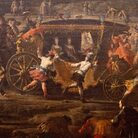 Dal 20 December 2025 al 20 April 2026
Caserta | Reggia di Caserta
Dal 20 December 2025 al 20 April 2026
Caserta | Reggia di Caserta
Regine: trame di cultura e diplomazia tra Napoli e l’Europa
-
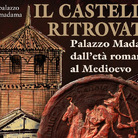 Dal 19 December 2025 al 23 March 2026
Torino | Palazzo Madama - Museo Civico d’Arte Antica
Dal 19 December 2025 al 23 March 2026
Torino | Palazzo Madama - Museo Civico d’Arte Antica
Il castello ritrovato. Palazzo Madama dall’età romana al medioevo
-
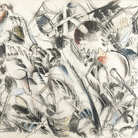 Dal 17 December 2025 al 19 January 2026
Roma | Palazzo della Cancelleria
Dal 17 December 2025 al 19 January 2026
Roma | Palazzo della Cancelleria
De Humana Mensura di Linda Karshan
-
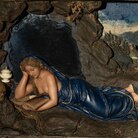 Dal 18 December 2025 al 12 April 2026
Firenze | Gallerie degli Uffizi
Dal 18 December 2025 al 12 April 2026
Firenze | Gallerie degli Uffizi
Cera una volta. Sculture dalle collezioni medicee
-
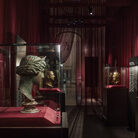 Dal 11 December 2025 al 9 April 2026
Firenze | Museo Archeologico Nazionale di Firenze
Dal 11 December 2025 al 9 April 2026
Firenze | Museo Archeologico Nazionale di Firenze
Icone di Potere e Bellezza
-
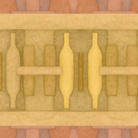 Dal 11 December 2025 al 11 January 2026
Roma | Palazzo Esposizioni Roma
Dal 11 December 2025 al 11 January 2026
Roma | Palazzo Esposizioni Roma
Giorgio Morandi nella Collezione Eni. Un viaggio attraverso la storia culturale del cane a sei zampe e l’eredità di Enrico Mattei


